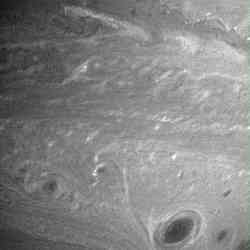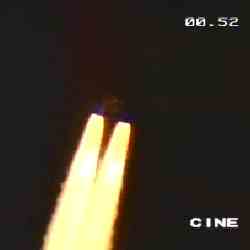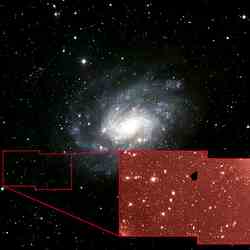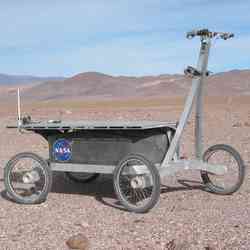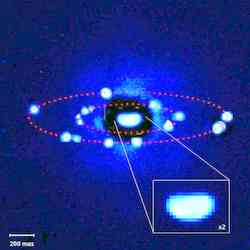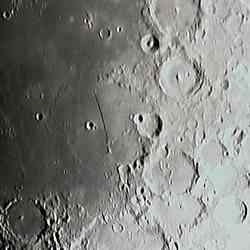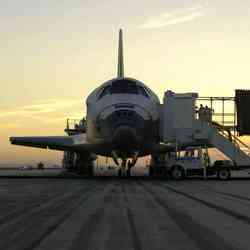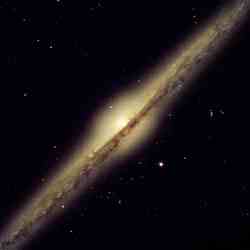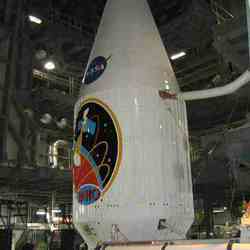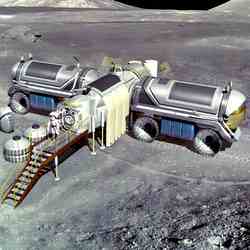
Artist’s concept of possible exploration programs. Image credit: NASA Click to enlarge
Have you ever walked across a wool carpet in leather-soled shoes on a dry winter day, and then reached out toward a doorknob? ZAP! A stinging spark leaps between your fingers and the metal knob.
That’s static discharge–lightning writ small.
Static discharge is merely annoying to anyone on Earth living where winters have exceptionally low humidity. But to astronauts on the Moon or on Mars, static discharge could be real trouble.
“On Mars, we think the soil is so dry and insulating that if an astronaut were out walking, once he or she returned to the habitat and reached out to open the airlock, a little lightning bolt might zap critical electronics,” explains Geoffrey A. Landis, a physicist with the Photovoltaics and Space Environmental Effects Branch at NASA Glenn Research Center in Cleveland, Ohio.
This phenomenon is called triboelectric charging.
The prefix “tribo” (pronounced TRY-bo) means “rubbing.” When certain pairs of unlike materials, such as wool and hard shoe-sole leather, rub together, one material gives up some of its electrons to the other material. The separation of charge can create a strong electric field.
Here on Earth, the air around us and the clothes we wear usually have enough humidity to be decent electrical conductors, so any charges separated by walking or rubbing have a ready path to ground. Electrons bleed off into the ground instead of accumulating on your body.
But when air and materials are extraordinarily dry, such as on a dry winter’s day, they are excellent insulators, so there is no ready pathway to ground. Your body can accumulate negative charges, possibly up to an amazing 20 thousand volts. If you touch a conductor, such as a metal doorknob, then–ZAP!–all the accumulated electrons discharge at once.
On the Moon and on Mars, conditions are ideal for triboelectric charging. The soil is drier than desert sand on Earth. That makes it an excellent electrical insulator. Moreover, the soil and most materials used in spacesuits and spacecraft (e.g., aluminized mylar, neoprene-coated nylon, Dacron, urethane-coated nylon, tricot, and stainless steel) are completely unlike each other. When astronauts walk or rovers roll across the ground, their boots or wheels gather electrons as they rub through the gravel and dust. Because the soil is insulating, providing no path to ground, a space suit or rover can build up tremendous triboelectric charge, whose magnitude is yet unknown. And when the astronaut or vehicle gets back to base and touches metal–ZAP! The lights in the base may go out, or worse.
Landis and colleagues at NASA Glenn first noticed this problem in the late 1990s before Mars Pathfinder was launched. “When we ran a prototype wheel of the Sojourner rover over simulated Martian dust in a simulated Martian atmosphere, we found it charged up to hundreds of volts,” he recalls.
That discovery so concerned the scientists that they modified Pathfinder’s rover design, adding needles half an inch long, made of ultrathin (0.0001-inch diameter) tungsten wire sharpened to a point, at the base of antennas. The needles would allow any electric charge that built up on the rover to bleed off into the thin Martian atmosphere, “like a miniature lightning rod operating in reverse,” explains Carlos Calle, lead scientist at NASA’s Electrostatics and Surface Physics Laboratory at Kennedy Space Center, Florida. Similar protective needles were also installed on the Spirit and Opportunity rovers.
On the Moon, “Apollo astronauts never reported being zapped by electrostatic discharges,” notes Calle. “However, future lunar missions using large excavation equipment to move lots of dry dirt and dust could produce electrostatic fields. Because there’s no atmosphere on the Moon, the fields could grow quite strong. Eventually, discharges could occur in vacuum.”
“On Mars,” he continues, “discharges can happen at no more than a few hundred volts. It’s likely that these will take the form of coronal glows rather than lightning bolts. As such, they may not be life threatening for the astronauts, but they could be harmful to electronic equipment.”
So what’s the solution to this problem?
Here on Earth, it’s simple: we minimize static discharge by grounding electrical systems. Grounding them means literally connecting them to Earth–pounding copper rods deep into the ground. Ground rods work well in most places on Earth because several feet deep the soil is damp, and is thus a good conductor. The Earth itself provides a “sea of electrons,” which neutralizes everything connected to it, explains Calle.
There’s no moisture, though, in the soil of the Moon or Mars. Even the ice believed to permeate Martian soil wouldn’t help, as “frozen water is not a terribly good conductor,” says Landis. So ground rods would be ineffective in establishing a neutral “common ground” for a lunar or Martian colony.
On Mars, the best ground might be, ironically, the air. A tiny radioactive source “such as that used in smoke detectors,” could be attached to each spacesuit and to the habitat, suggests Landis. Low-energy alpha particles would fly off into the rarefied atmosphere, hitting molecules and ionizing them (removing electrons). Thus, the atmosphere right around the habitat or astronaut would become conductive, neutralizing any excess charge.
Achieving a common ground on the Moon would be trickier, where there’s not even a rarefied atmosphere to help bleed off the charge. Instead, a common ground might be provided by burying a huge sheet of foil or mesh of fine wires, possibly made of aluminum (which is highly conductive and could be extracted from lunar soil), underneath the entire work area. Then all the habitat’s walls and apparatus would be electrically connected to the aluminum.
Research is still preliminary. So ideas differ amongst the physicists who are seeking, well, some common ground.
Original Source: NASA News Release
